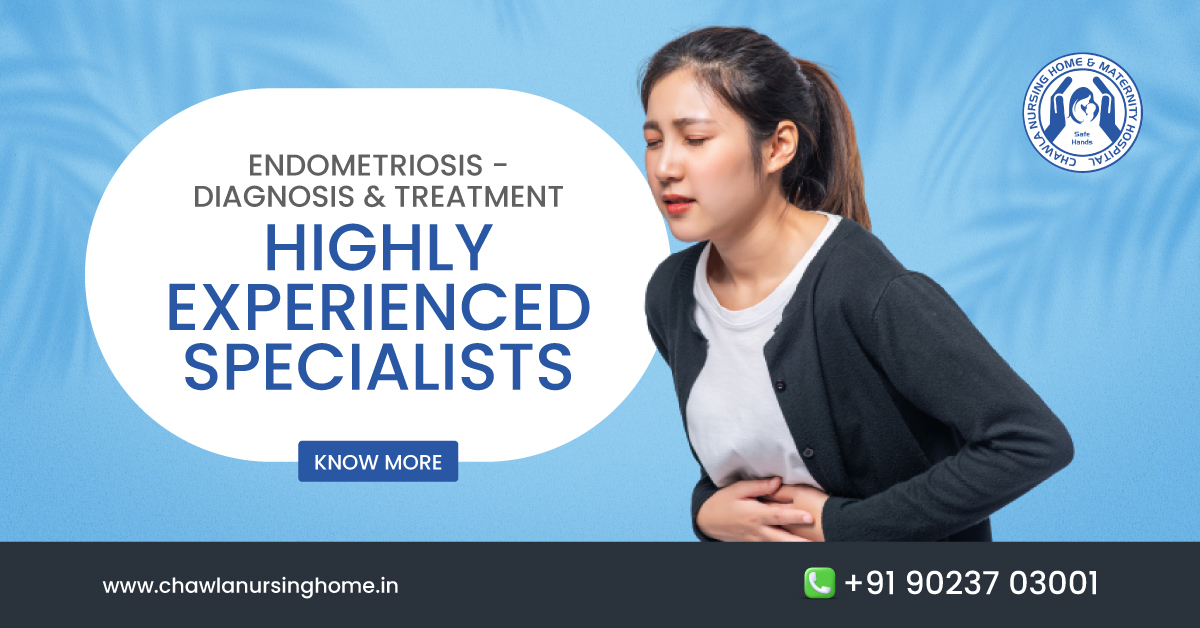
Endometriosis Treatment
A common condition, endometriosis is a painful condition that can impact your everyday life. When you have endometriosis, tissue similar to the lining of the uterus grows in other places within your abdomen and pelvic area. Endometriosis can cause painful and heavy periods, as well as fertility issues.
What is endometriosis?
Endometriosis is a condition where tissue similar to the lining of your uterus grows on other parts of your body. When this tissue grows in the wrong places, it can cause you to experience uncomfortable symptoms that can impact your daily life. Some people with endometriosis also have issues getting pregnant.
The endometrium is the inner lining of your uterus. This tissue is what you shed during a menstrual period. Think of endometrium as layers of tissue that build up along the inside lining of your uterus. When you have a period, these layers fall away from the walls of your uterus and leave your body. If you get pregnant, the endometrium helps support the early phases of development.
When you have endometriosis, endometrial-like tissue grows on other organs or structures. This tissue can grow within your abdomen, pelvis or even chest. This tissue is hormonally sensitive and can become inflamed during your menstrual cycle. These areas of endometrial-like tissue can cause ovarian cysts, superficial lesions, deeper nodules, adhesions (tissue that connects your organs and binds them together) and scar tissue within your body.
A few places you can develop endometriosis include the:
- Outside and back of your uterus.
- Fallopian tubes.
- Ovaries.
- Vagina.
- Peritoneum (the lining of your abdomen and pelvis).
- Bladder and ureters.
- Intestines.
- Rectum.
- Diaphragm (a muscle near the bottom of your chest that plays an important role in breathing).
How serious is endometriosis?
Endometriosis is a common condition that can interfere with your everyday life. It can cause long-term pain, disruptions to your menstrual cycle and fertility issues. The symptoms of endometriosis are often manageable with treatment.
Who can get endometriosis?
Endometriosis is a condition that most commonly impacts people between the ages of 25 and 40. It can also happen to younger people during their teenage years. Although many people find relief from endometriosis symptoms after menopause, it can still cause discomfort and pain.
What are some of the risk factors for endometriosis?
Some factors can place you at a higher risk of developing endometriosis. These factors can include:
- Family history of endometriosis.
- The age you first start having periods. People who begin menstruating before age 11 may be at a higher risk.
- The length of your menstrual cycle (shorter time between periods) and the duration of flow (how many days of bleeding).
- Defects in your uterus or fallopian tubes.
Is endometriosis genetic?
Although experts don’t know the exact cause of endometriosis, they do see a connection between a family history of the condition and an increased risk of developing it at some point. If another person in your family — your mother, grandmother or sister — has endometriosis, talk to your healthcare provider about your risk.
What causes endometriosis?
The cause of endometriosis is unknown. When you have endometriosis, tissue similar to the lining of your uterus grows in the wrong places. When it develops in places like the outside of your uterus, fallopian tubes, ovaries, intestine and within your pelvic cavity, it can cause painful symptoms. This pain is related to increased inflammation and often fibrosis and adhesions.
When endometrial-like tissue grows outside of your uterus, it can cause scar tissue (adhesions). These sections of scar tissue can fuse your organs — creating connections between them that normally wouldn’t be there. This can lead to discomfort and pain.
What are the symptoms of endometriosis?
There are many symptoms connected with endometriosis. The main symptom is pain. This pain can be intense or mild. It can typically be felt in your abdomen, pelvic region and lower back. Although endometriosis is a common condition, not all people will experience symptoms. Sometimes, you can have endometriosis and not know until it’s found during another procedure or investigation of infertility.
People who do experience symptoms of endometriosis may have:
- Very painful menstrual cramps.
- Abdominal pain or back pain during your period or in between periods.
- Pain during sex.
- Heavy bleeding during periods or spotting (light bleeding) between periods.
- Infertility (difficulty becoming pregnant).
- Painful bowel movements.
There’s no connection between the symptoms of endometriosis and the severity of the condition. Some people may have very few patches of endometriosis and still experience severe pain. Other people might have severe endometriosis, but not experience a great deal of pain.
How is endometriosis diagnosed?
In many cases, an endometriosis diagnosis will start with your symptoms. Painful and heavy periods might cause you to reach out to your healthcare provider. Once at an appointment, your provider (typically an Ob-Gyn) may start by asking you for your personal medical history, about any previous pregnancies and if any other people in your family have endometriosis. Your provider may do a pelvic exam. If your healthcare provider needs more information they’ll likely perform pelvic imaging starting with an ultrasound. Depending on your symptoms, physical exam and ultrasound results, an MRI may also be ordered for further endometriosis mapping. A laparoscopy may be offered for both definitive diagnosis and treatment. It can be a useful way to confirm endometriosis because your surgeon doing the procedure can use a small camera (laparoscope) to look inside your body. A biopsy (small tissue sample) might be taken during this procedure. The biopsy will be sent to a lab to confirm the diagnosis.
Sometimes, you find endometriosis by accident. Not all people who have endometriosis will experience symptoms. In these cases, your provider might discover the condition during a different procedure.
What is the treatment for endometriosis?
Your healthcare provider will help create your treatment plan for endometriosis based on a few factors, including:
- The severity of your endometriosis.
- Your plans for future pregnancies.
- Your age.
- The severity of your symptoms (often pain).
In many cases, your treatment plan will focus primarily on managing your pain and improving fertility issues (if you are planning on a future pregnancy). This can be done through medications and surgery.
Medications are often used to help control the symptoms of endometriosis. These can include pain medications and hormone therapies.
In some cases, your provider might recommend surgery as a way to confirm and treat endometriosis. There are always risks to a surgical procedure. However, surgery for endometriosis can be an effective way to relieve pain and, in some cases, improve your fertility.
Endometriosis is considered a chronic disease. Many people experience relief from endometriosis pain after surgery, but the symptoms may return within a few years. The severity of your endometriosis could play a part in how quickly — if at all — it comes back after surgery. Your provider might suggest combining a surgical procedure with medications for the best outcome. Your provider may recommend pelvic floor physical therapy with or without medications for central nerve pain.
Surgical options to treat endometriosis include:
- Laparoscopy: In this procedure, your surgeon will make a very small cut in your abdomen (< 1 centimetre) and insert a thin tube-like tool called a laparoscope into your body. This tool can be used to see inside your body and identify endometriosis with a high-definition camera. Additional 5-millimetre instruments can then be used to excise and remove lesions.
- Hysterectomy: In severe cases, your surgeon may suggest removing your uterus based on the amount of endometriosis and scar tissue present, if you have other uterine conditions like adenomyosis and your desire for future fertility. If you have a hysterectomy, areas of endometriosis should still be excised to optimize your pain relief.
If you have endometriosis and are trying to achieve pregnancy, in vitro fertilization (IVF) may help you achieve this goal.
Can endometriosis be prevented?
Endometriosis isn’t a condition you can necessarily prevent. Certain factors can reduce your risk of developing the condition, but in some cases, you may still have endometriosis. There could be a genetic reason that some people develop endometriosis. If other people in your family (mother or grandmother) have been diagnosed with endometriosis, talk to your provider about your risk of also developing the condition.
A few factors that can reduce your risk of endometriosis include:
- Pregnancy.
- Breastfeeding.
- Maintaining a weight that's healthy for you.
- Starting your menstrual period at a later age.
The Chawla IVF medical team at Chawla Nursing Home understands the risks and rewards that come with Endometriosis Treatment, and we will help you through every step of the way. Schedule a consultation appointment with one of our doctors at our Jalandhar location to find out if Endometriosis Treatment is your best option for prevention and pregnancy purposes.
Schedule An Appointment
Get your Appointment Confirm with us Easily

